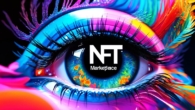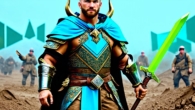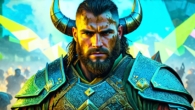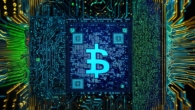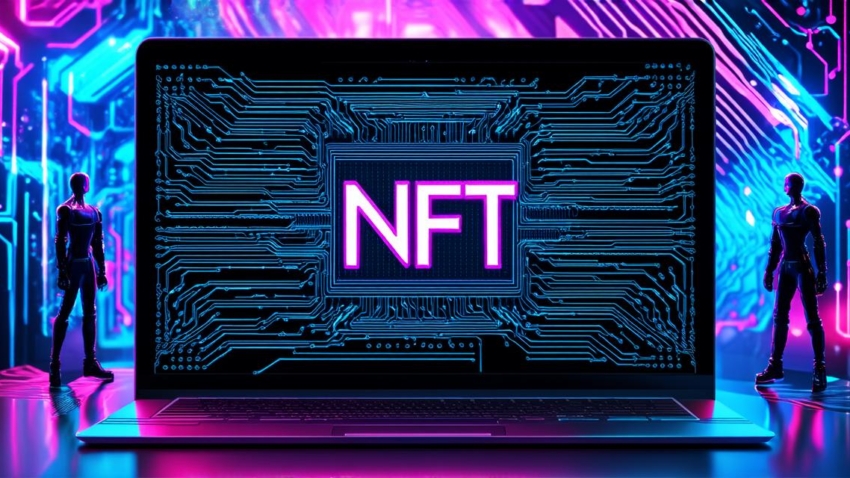
How can you create an NFT
What are NFTs?
NFTs are unique digital assets that represent ownership and authenticity of a specific piece of content. They can be anything from artwork to collectibles, real estate, or even virtual land. NFTs are non-fungible, which means they cannot be exchanged for other items of equal value. Instead, they are traded on a blockchain network, where ownership is recorded and verified by a decentralized system.
The Benefits of Creating an NFT Marketplace
Creating an NFT marketplace can provide numerous benefits to both creators and collectors. Here are some key advantages:
- Ownership and Authenticity: NFTs provide a way to verify ownership and authenticity of digital assets. This is particularly important in the art world, where it’s easy for pieces to be copied or altered. With an NFT marketplace, creators can ensure that their work is truly unique and cannot be replicated.
- Monetization: NFTs provide a new revenue stream for creators. By selling their digital assets as NFTs, they can earn royalties on future sales and secondary market activity. This can be particularly beneficial for independent artists who struggle to make ends meet through traditional means.
- Liquidity: NFTs provide liquidity to the art market. With an NFT marketplace, collectors can easily buy and sell digital assets at any time. This can help increase the overall value of the market and attract new investors.
- Accessibility: NFTs make it easier for people around the world to access and own digital assets. By creating an NFT marketplace, you can make art and other forms of content more accessible to a wider audience.

How to Create an NFT Marketplace
Now that we’ve covered the benefits let’s dive into the process of creating an NFT marketplace. Here are the steps you need to follow:
- Choose Your Blockchain Platform
- Design Your Marketplace User Interface
- Create Your Smart Contract
- Mint Your First NFT
- Launch Your Marketplace
The first step in creating an NFT marketplace is choosing a blockchain platform. There are several options available, including Ethereum, Binance Smart Chain, and Polygon. Each platform has its own advantages and disadvantages, so it’s important to choose the one that best fits your needs.
Once you’ve chosen a blockchain platform, the next step is designing your marketplace user interface. This will be the front-end of your NFT marketplace and should be easy to use and visually appealing. You can use tools like React or Angular to create your user interface, or hire a developer to do it for you.
The smart contract is the backbone of your NFT marketplace. It’s a self-executing program that governs the buying and selling of NFTs on your platform. You can use tools like Solidity to create your smart contract, or hire a developer to do it for you.
Once your smart contract is in place, it’s time to mint your first NFT. This will be the digital asset that you’ll be selling on your marketplace. You can use tools like OpenSea or Rarible to mint your NFT, or hire a developer to do it for you.
Once your NFT is minted, it’s time to launch your marketplace. This will involve promoting your platform and attracting buyers and sellers. You can use social media, email marketing, or paid advertising to promote your marketplace.
Case Studies: Real-Life Examples of Successful NFT Marketplaces
Now that we’ve covered the basics let’s take a look at some real-life examples of successful NFT marketplaces.
1. OpenSea
OpenSea is one of the most popular NFT marketplaces on the Ethereum blockchain. It was launched in 2018 and has since grown to become the largest NFT marketplace in the world. OpenSea allows creators to sell their digital assets as NFTs, including artwork, collectibles, and even virtual land.
2. Rarible
Rarible is another popular NFT marketplace that was launched on the Ethereum blockchain in 2018. It allows creators to sell their digital assets as NFTs, including artwork, music, and collectibles. Rarible has a user-friendly interface and is known for its easy-to-use smart contract system.
3. SuperRare
SuperRare is an NFT marketplace that was launched on the Ethereum blockchain in 2018. It allows creators to sell their digital assets as NFTs, including artwork and collectibles. SuperRare has a strong focus on art and design, and features works by some of the most well-known artists in the digital art community.
Summary
Creating an NFT marketplace can be a complex process, but with the right tools and knowledge, it’s definitely achievable. By following the steps outlined in this guide, you can create your own NFT marketplace and start buying and selling digital assets. Whether you’re a creator looking to monetize your work or a collector looking to add to your collection, NFTs are an exciting new way to own and trade digital assets.
FAQs
Here are some frequently asked questions about NFT marketplaces:
- What is an NFT?
- Why create an NFT marketplace?
- What blockchain platforms are best for creating an NFT marketplace?
An NFT is a unique digital asset that represents ownership and authenticity of a specific piece of content. They can be anything from artwork to collectibles, real estate, or even virtual land.
Creating an NFT marketplace can provide numerous benefits to both creators and collectors. These include ownership and authenticity, monetization, liquidity, and accessibility.
The most popular options are Ethereum, Binance Smart Chain, and Polygon. Each platform has its own advantages and disadvantages, so it’s important to choose the one that best fits your needs.

